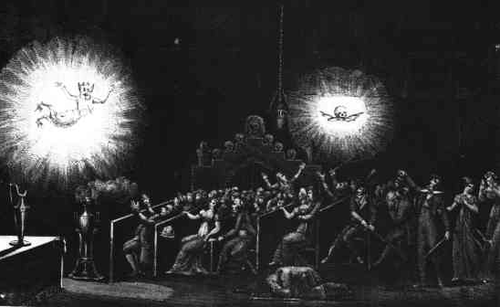Links and write-ups about beautiful things from around the web!
-
Makes Me Feel Like Were All Just Wired Up Like a
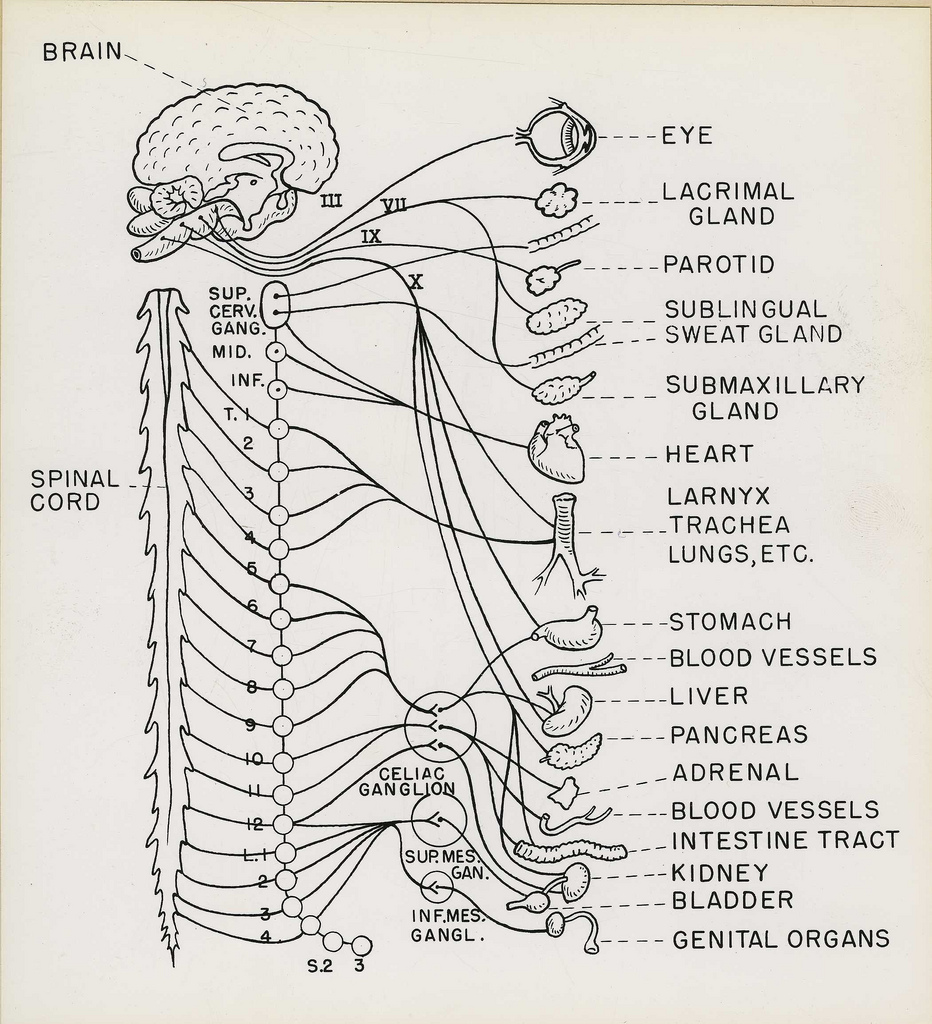
Makes me feel like we’re all just wired up like a 66 punchdown block. Hopefully with a bit neater cabling.
(From the Otis Archives Flickr stream of Walter Reed’s medical museum)
-
Breakdowns of 1936 — Warner Brothers Bloopers
Breakdowns of 1936, Warner Bros’ annual in-house blooper reel (surprisingly uncensored). At least now I know what the most common swear was in 1936!
(Via Coudal Partners)
-
Phantasmagoria
It’s interesting to look back at the hype and spectacle of the early CD-ROM games (with novelties like Myst flying off the shelf the medium was hailed as the savior of declining video game sales) as a parallel to the hype and spectacle of the real 18th Century phantasmagoria and magic lantern parlor theater. From classic gaming site GOG.com’s short editorial piece commemorating their recent addition of Roberta William’s popular 1995 FMV horror game Phantasmagoria:
In the mid-1700s, long before horror pioneers like Alfred Hitchcock, films such as Dracula and Frankenstein, and even cinema itself, the predecessor to horror cinema was born in a tiny coffee shop in Leipzig, Germany. The proprietor of the shop, Johann Schropfer, welcomed patrons with a warm beverage and an invitation to shoot the breeze and some stick in his adjoining billiards room. But the extra attraction of running a table after a long workday didn’t do much to boost Schropfer’s steadily declining patronage. In an effort to drum up business, Schropfer cast out pool tables and converted the billiards parlor into a séance chamber. […]
By the late 1760s, Schropfer’s once-deserted shop had evolved into a hotspot where patrons gasped in awe at ghostly images projected onto smoke, chilling music, ambient sounds, and burning incenses whose aromas were evocative of malevolent forces. The masterful performance put on by Schropfer proved so lucrative that the coffee-shop-owner-turned-showman took his show on the road throughout Europe until 1774, at which time Schropfer, perhaps haunted by the specters he alleged to call forth from the afterlife, took his own life.
-
Waiting for Guffman
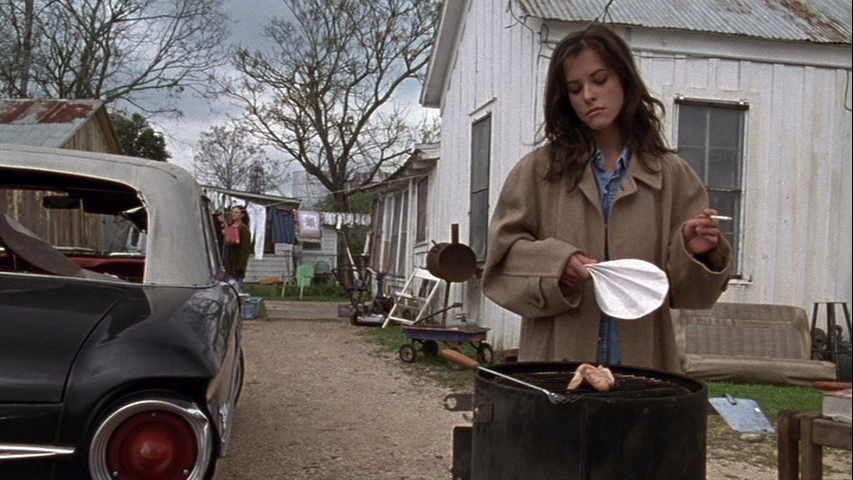
Waiting for Guffman. A lot of folks don’t seem to know that this one was filmed in Austin and Lockhart, TX, so there’s that bit of trivia for you. There are also some very quick cameos by David Cross, Brian Doyle-Murray (Bill Murray’s older brother), and in a very obscure part as the guy mouth-juggling ping pong balls, Turk Pipkin.
Parker Posey grilling a single chicken wing is one of the saddest things I’ve ever seen committed to film.
-
A Private School Principal Once Told Me That in
A private school principal once told me that in the history of literature, the greatest translation of all time was the English translation of Waiting for Godot, because Samuel Beckett had personally translated it from French, in which he’d originally written it, into English, his mother tongue. Well, Steve Purcell just might be the Samuel Beckett of comic book video games. From an article on Huffington Post declaring that Steve Purcell’s Sam & Max Hit the Road is among the greatest comic book games ever (hard to deny). Nothing revealing in the article, I just enjoy that one of my all-time favorite cartoonists is becoming well-known enough now after 20+ years to start making appearances on sites like HuffPo.
-
Shadow of a Doubt
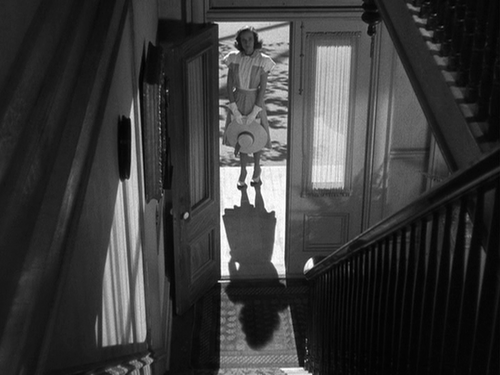
Slowly working my way through all of Hitchcock’s oeuvre, moving on to some of his films that haven’t fully entered our pop culture lexicon. Shadow of a Doubt was one of his better early American movies, with some nifty subtext, a minor tinge of telepathy, and possible vampiric overtones. Definitely a 1942 pre-war Americana kind of movie, but with the signature Hitchcock dark humor and psychological uneasiness that turns the Norman Rockwell small town on its head.
-
A Small Dose of Arcade Game Humor from Giant
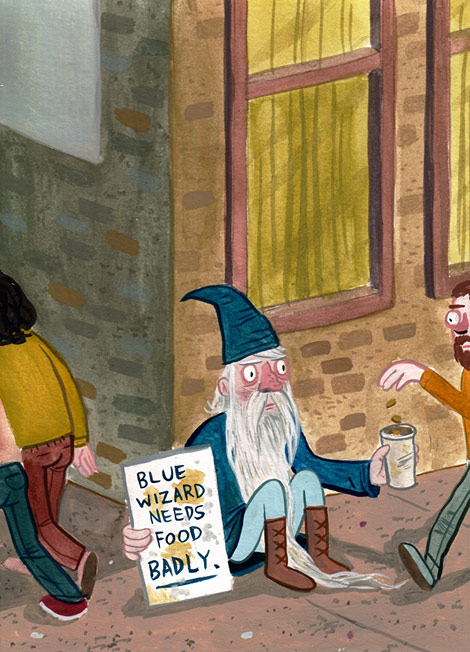
A small dose of arcade game humor from Giant Robot’s newest Game Over art show, by painter Jeremy Tinder.
(Via GameSetWatch)
-
Uncle Fester Laughing in Theater
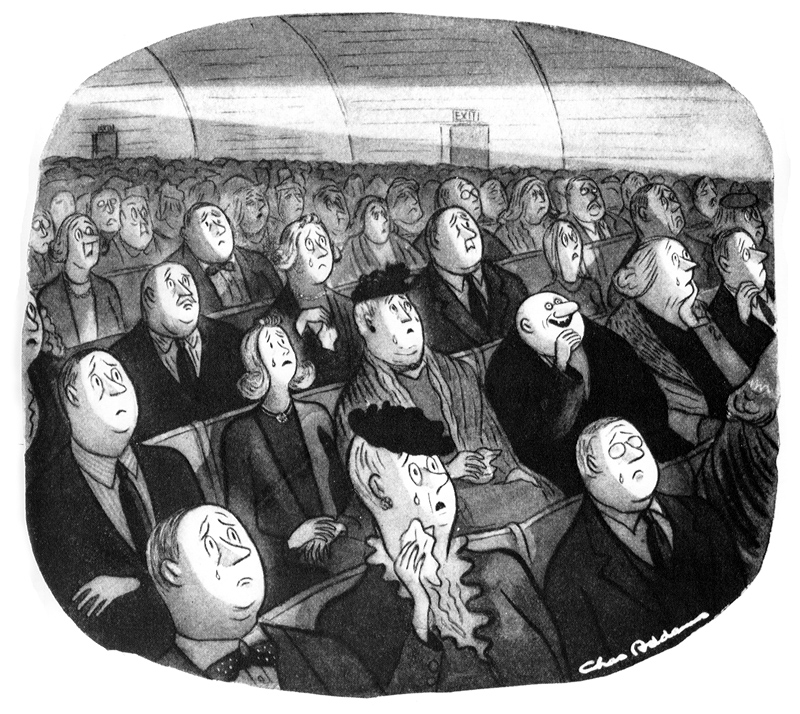
The New York Times has up a nice review of the new Charles Addams exhibit at the Museum of the City of New York:
The city street is dark and deserted. The buildings are empty. There are no witnesses. A lone man carrying a briefcase, after a long day at the office perhaps, approaches a subway staircase. Out of the subterranean gloom, a giant human hand protrudes, its index finger beckoning the office worker, inviting him into the depths. His eyes are wide with astonishment, his face showing the hint of a grin, as if the bizarre, illicit invitation were not entirely unwelcome. […]
Above is my personal favorite Addams cartoon, perhaps one of my favorite cartoons of all time. His drawings are often cited as finding their humor and inspiration in the macabre — I think their lasting appeal comes more from his ability to find joy in laughing at and rejecting the bleakness of modern life.
-
Ren and Stimpy Production Music
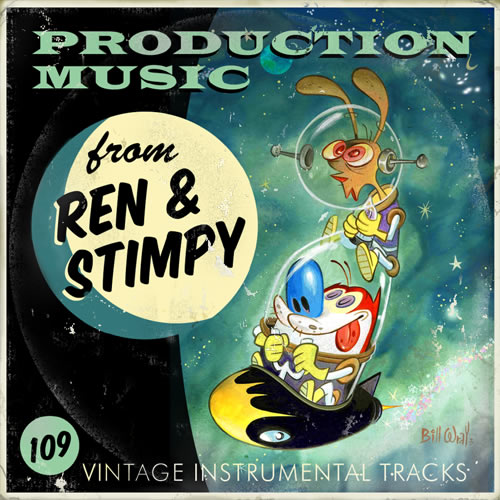
WOW, I’m about four years late on this one, but in case anyone else hasn’t come across this: a fan has collected and cataloged a huge chunk (nearly 7½ hours worth!) of the incidental music from Ren & Stimpy. You know the stuff: the delightfully surreal, atomic age lounge music that defined the series. Don’t miss the smallish image link to Volume 2! The direct download links went dark, but if you poke around towards the bottom of the comments you can probably figure it out…
(spotted via twomuch)
-
C’est l’heure d’or
Designers love noodling about perfecting the design of chairs. Linguists seem to love discussing why “cellar door” is cited as the most beautiful phrase in English. From Language Log’s The Romantic Side of Familiar Words:
And in fact the specific meaning of cellar door isn’t quite as irrelevant as people imagine. The undeniable charm of the story — the source of the delight and enchantment that C. S. Lewis reported when he saw cellar door rendered as Selladore –– lies the sudden falling away of the repressions imposed by orthography (which is to say, civilization) to reveal what Dickens called “the romantic side of familiar things." It’s the benign cousin of the disquietude we may feel when familiar things are suddenly charged with strange and troubling feelings, which Freud analyzed in his essay on the Unheimlich or uncanny. As Freud observed, heimlich can mean either “homey, familiar,” or “"concealed, withheld, kept from sight.” He goes on: “‘Unheimlich’ is customarily used, we are told, as the contrary only of the first signification of’ heimlich’, and not of the second. …” But he notes that the second meaning is always present as well: “everything is unheimlich that ought to have remained secret and hidden but has come to light.” Something is unheimlich, he says, because it “fulfils the condition of touching those residues of animistic mental activity within us and bringing them to expression.“
The unheimlich object, that is, is a kind of portal to the romance and passion that lie just beneath the surface of the everyday. In the world of fantasy, that role is suggested literally in the form of a rabbit hole, a wardrobe, a brick wall at platform 9¾. Cellar door is the same kind of thing, the expression people keep falling on to illustrate how civilization and literacy put the primitive sensory experience of language at a remove from conscious experience – "under a spell, so the wrong ones can’t find it” — until it’s suddenly thrown open. It would be hard make that point using rag mop.

